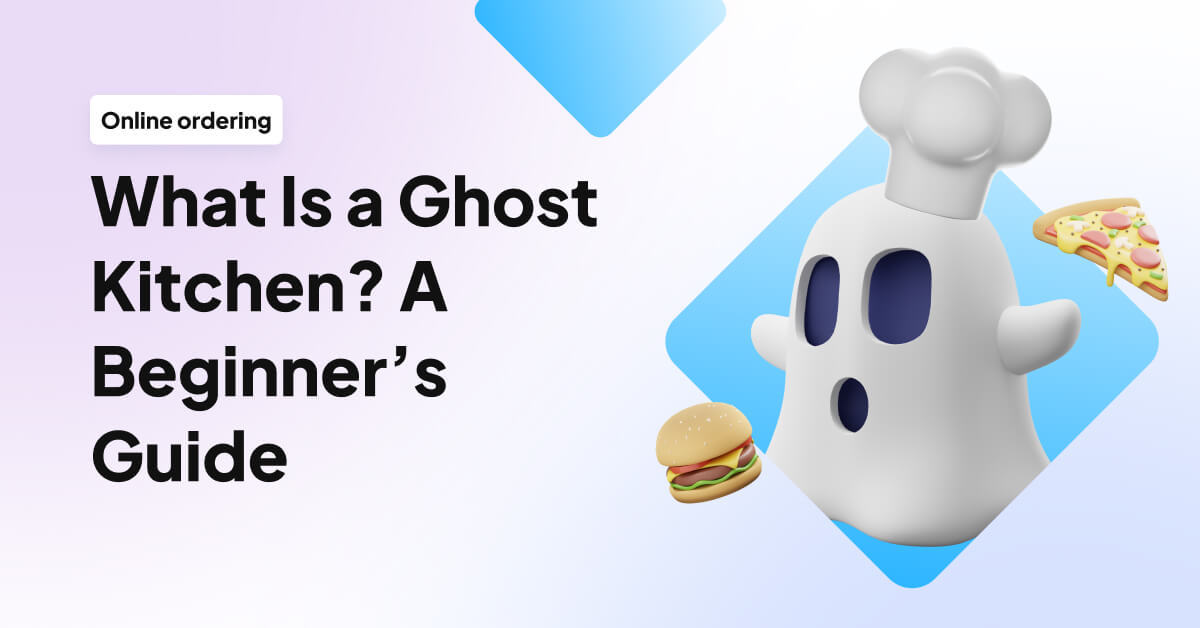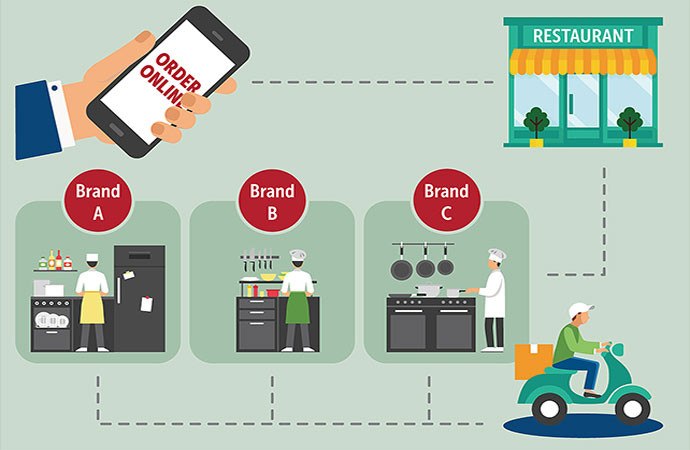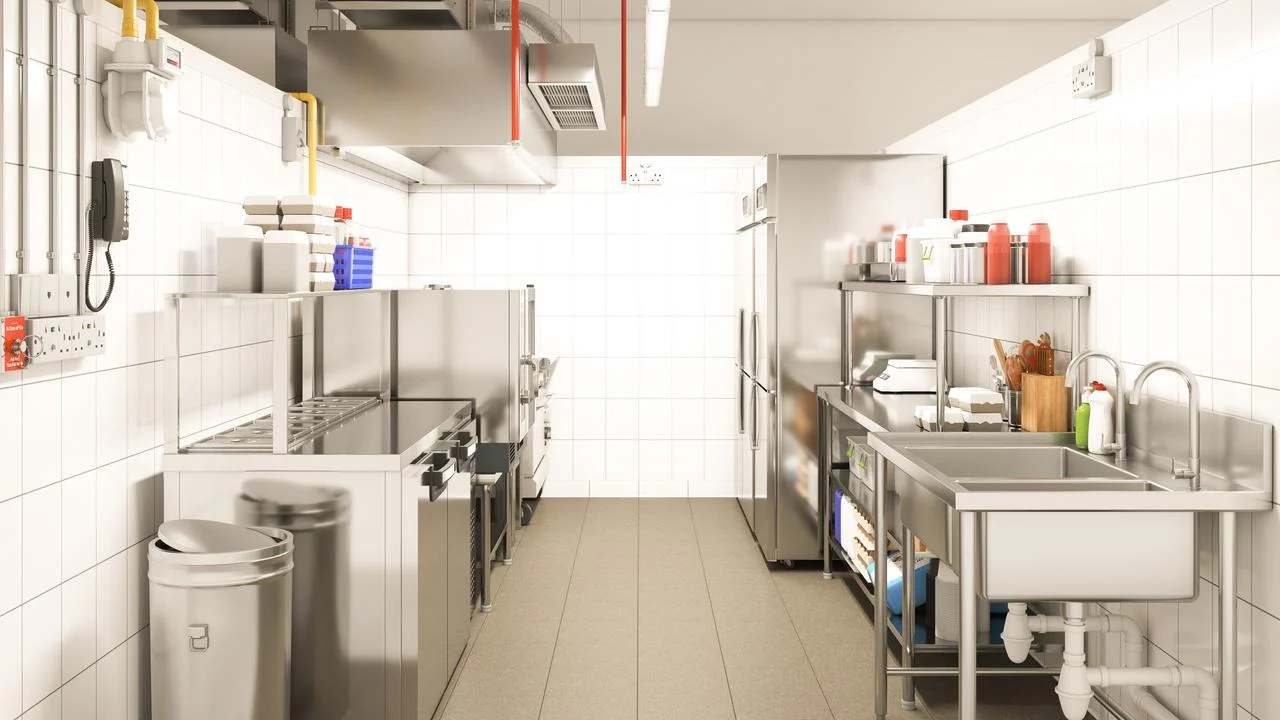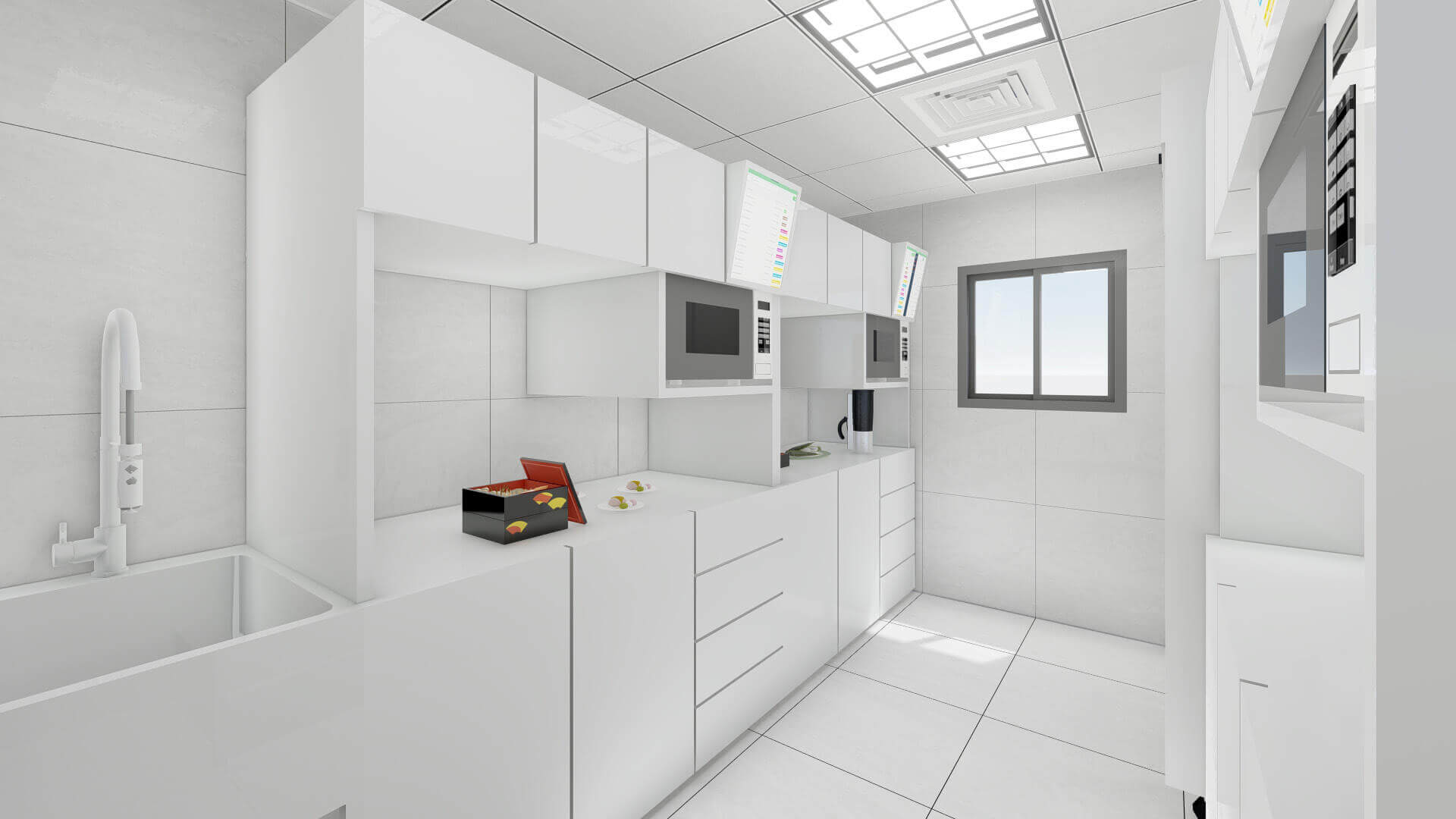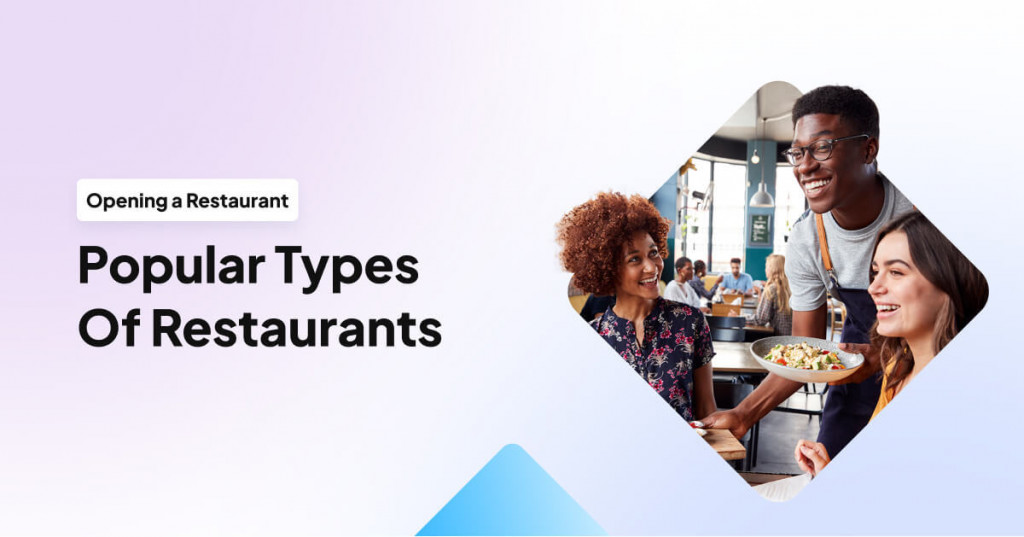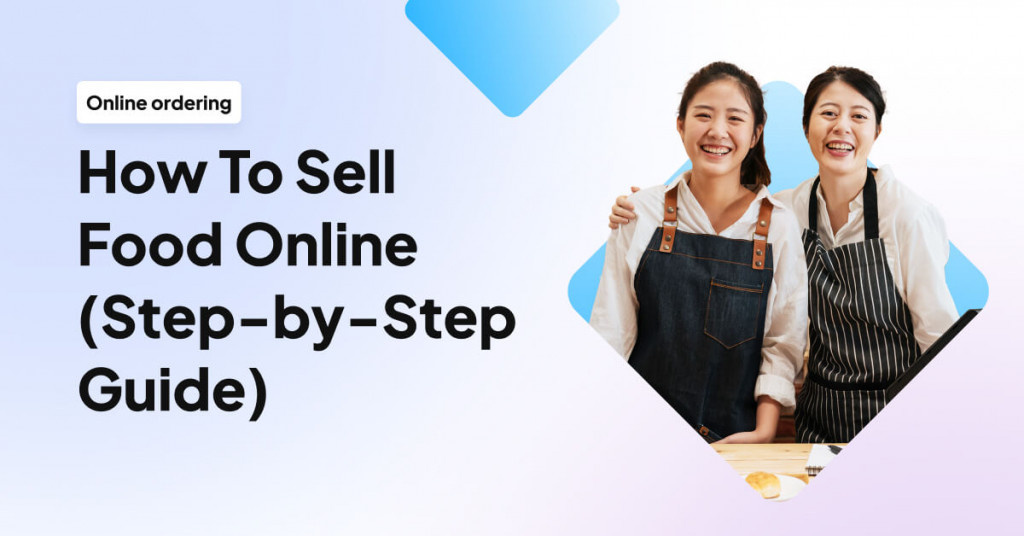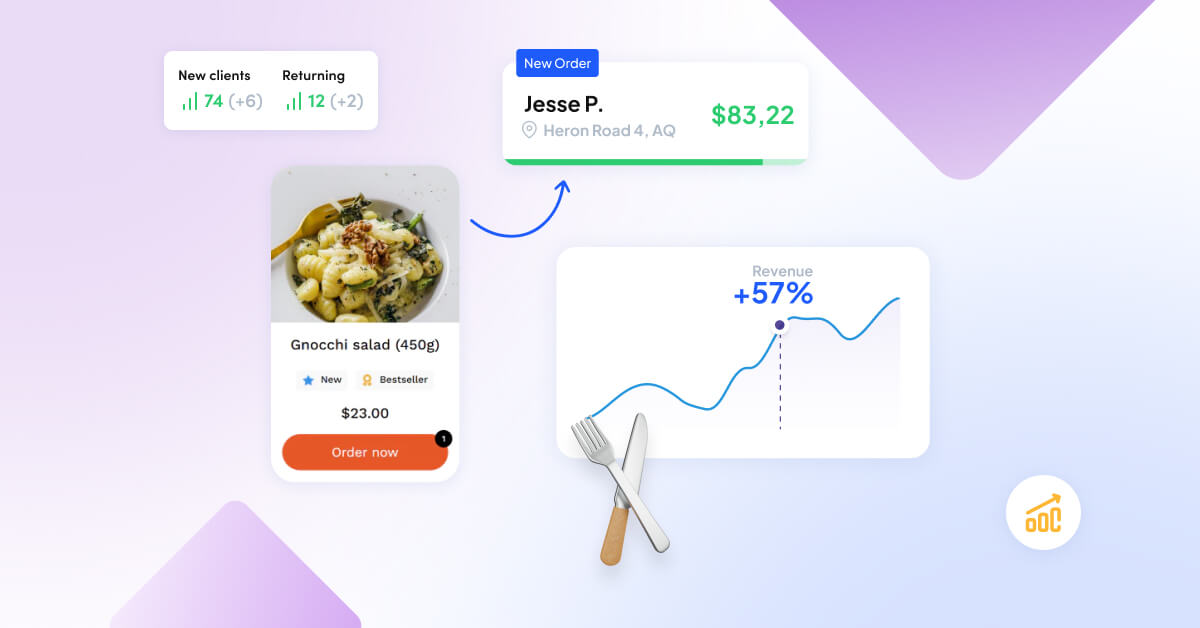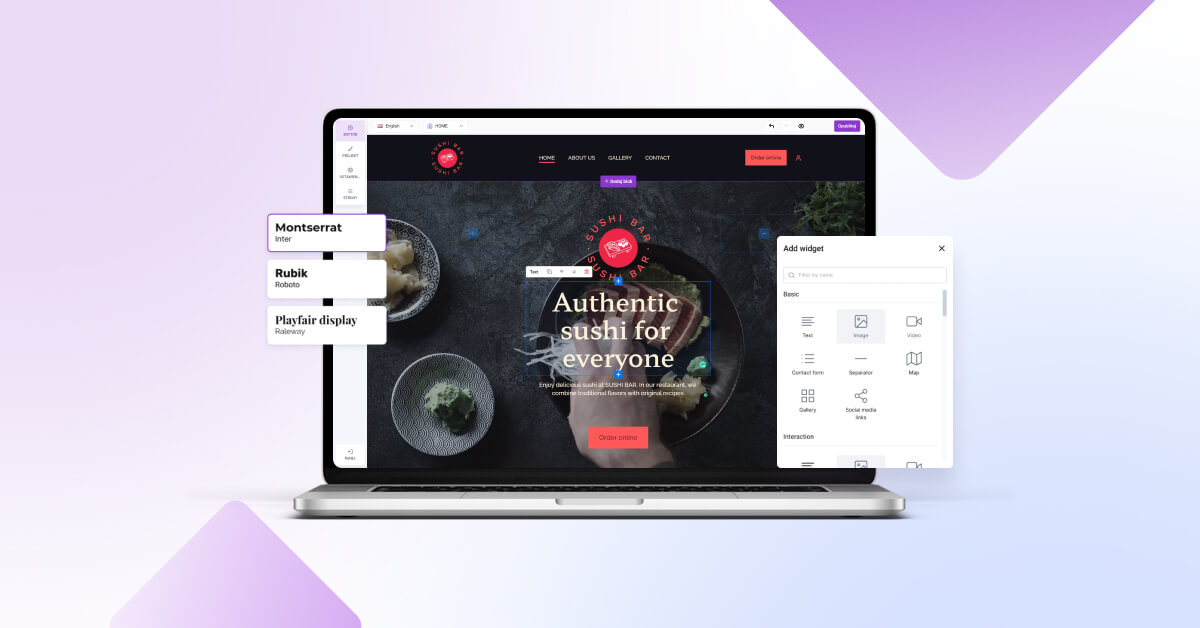The restaurant industry is constantly evolving and embracing new trends to keep up with the ever-changing demands of customers. One such trend that has been gaining traction in recent years is Ghost Kitchen.
With the growing popularity of online orders and the food delivery service, dark kitchens have become attractive for restaurants to increase their profit margins. But what exactly is a Ghost Kitchen, and why has it become so popular?
Let’s find out.
What is a Ghost Kitchen?
A Ghost Kitchen meaning: it’s a delivery-only restaurant that doesn’t serve dine-in customers. Unlike traditional restaurants with a physical dining area, a ghost kitchen only has a kitchen and storage space where food is prepared and packaged for delivery, and that’s it!
This allows restaurants to focus their resources on what’s important: making delicious food!
For example, a popular pizza restaurant wants to start offering delivery. Instead of building a new restaurant with a dining area, they can set up a ghost kitchen in the targeted locale.
They don’t have to worry about finding a prime location for a walk-in setup. Instead, they can make all the same pizzas they are famous for and package them for delivery. As a result, the customers get their hot, delicious pizza without stepping foot in a brick-and-mortar restaurant!
- CloudKitchens
- Frontier Kitchen
- Ghostkitchenbrands
- NextBite
- Kitchen United
Ghost Kitchen Trends And Impact On The Restaurant Industry
The ghost kitchen trend has revolutionized the restaurant industry by shifting the focus from dine-in to delivery and takeouts. Independent restaurants evolved during the pandemic when traditional restaurants had to adapt and serve customers through delivery, even with in-house operations shut down.
This is why the food industry not only survived the economic upheavals but remained a booming industry while all other businesses struggled.
The growing demand for food delivery has allowed business owners to reduce expenses associated with food businesses. With low operational costs and a successful delivery-only model, investing in dark kitchens is deemed less risky. The rise of delivery apps like DoorDash and GrubHub has also helped the ghost kitchen model scale better and faster with online orders. Virtual, delivery-only businesses can start selling without needing a storefront, expensive décor, or staff.
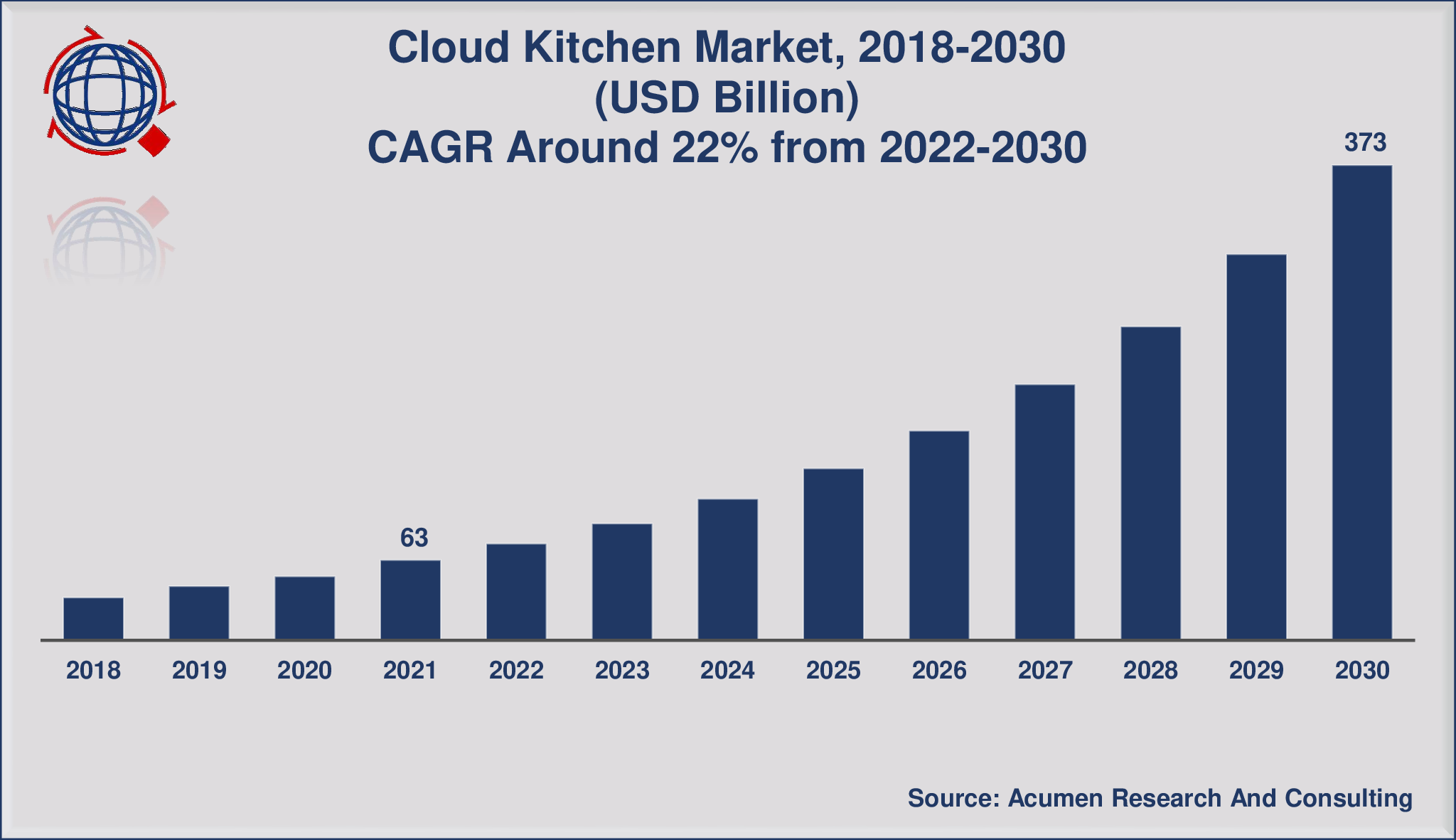
The food delivery industry is expected to be worth $365 billion worldwide by 2030, with the restaurant-to-consumer delivery segment growing to $125 billion in 2023. Both traditional restaurants and delivery-only businesses can profit from this trend. In addition, this emerging movement promises stellar growth as other companies look for ways to minimize employee layoffs and increase profits.
Traditional restaurants are expanding their operations by setting up their own ghost kitchen. This requires expertise in technology and digitalization of order and sales processes and a willingness to experiment. The goal is to avoid capacity bottlenecks and ensure little to no cannibalization between stationary and online businesses. Classic eateries must determine if they want to integrate a ghost kitchen into their in-house operations or set up a separate business for this virtual setup.
The goal is to avoid capacity bottlenecks and ensure little to no cannibalization between stationary and online businesses. Classic eateries must determine if they want to integrate a ghost kitchen into their in-house operations or set up a separate business for this virtual setup.
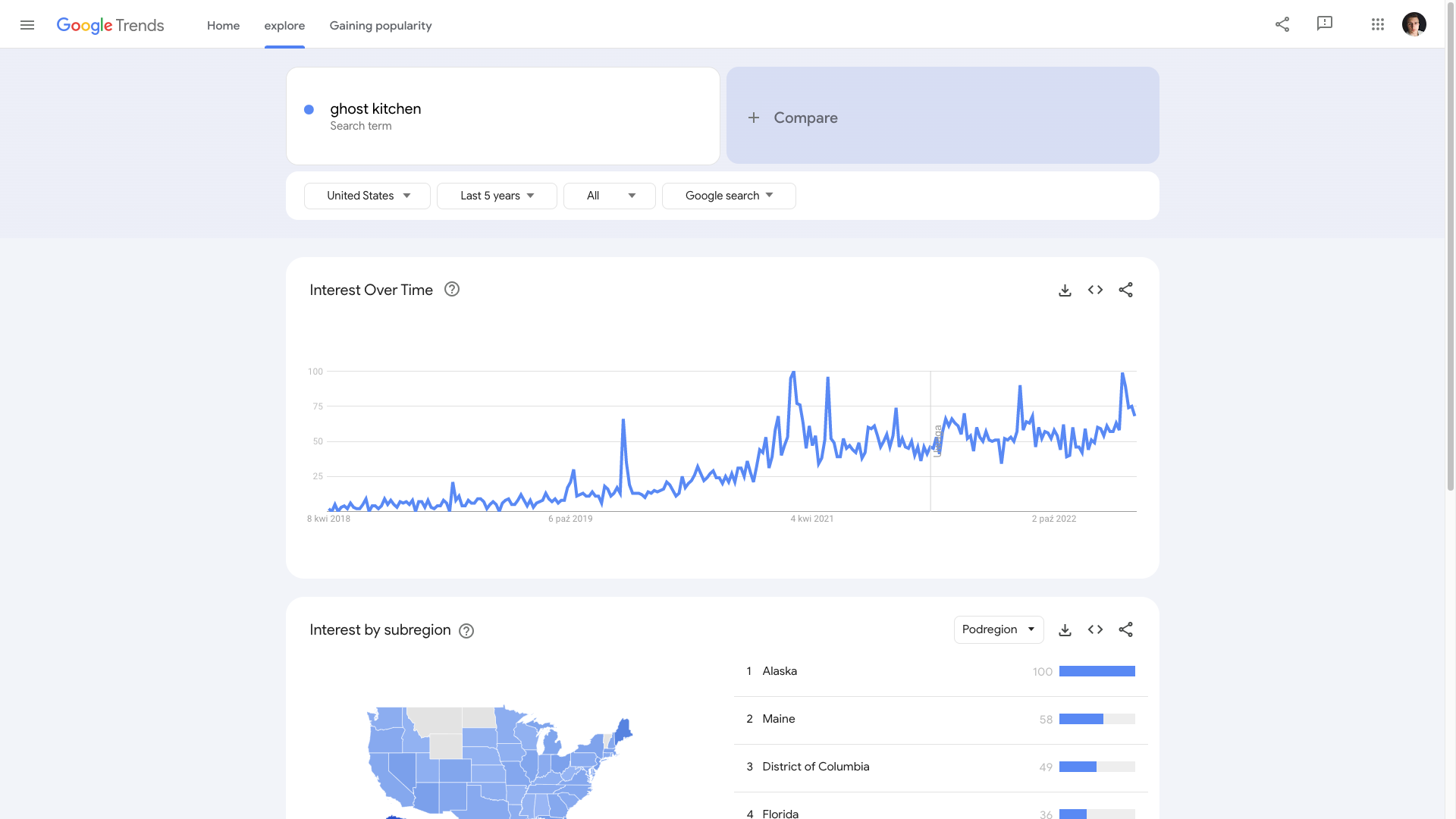
Why Ghost Kitchens are so popular
The lack of eat-in spaces is in no way a hindrance to the growth of ghost kitchens. On the contrary, here are several reasons why businesses and customers alike appreciate them:
- Very Few Resources Needed To Succeed: One of the most significant advantages of setting up a Ghost Kitchen is that it allows restaurants to increase their delivery orders without investing in a full-fledged dining room. This means that restaurants can increase their sales without worrying about the high costs of setting up a dining room, which makes this the cheapest way to open a restaurant.
- Opportunity To Increase Profit Margins: By setting up a Ghost Kitchen, restaurants can save money on rent, labor, and other overhead costs associated with operating a full-fledged restaurant. This can help restaurants increase their profits and offer customers lower prices.
- Ability To Reach More Customers Faster: By partnering with a third-party delivery service, restaurants can reach customers in various locations. This allows restaurants to expand their customer base and increase their sales.
- Convenience For Everyone: The popularity of ghost kitchens can be attributed to the fact that customers can order the food they like at their homes without driving to the location. Similarly, restaurants don’t have to worry about making cosmetic changes to décor and hiring staff to serve their clients.
- Starting A Ghost Kitchen Is Easy: If you already run a full-fledged food service, your kitchen can easily be converted and start serving delivery and takeout clients only. This way, you can expand your operations while keeping your operations to a minimum.
- Availability Of Software Solutions: Plenty of online delivery systems and app services promise to connect ghost kitchens to customers and make delivery easy.
At the beginning of the pandemic, there was a 100% decrease in seated restaurant diners worldwide. During this time, market size of the online food delivery market had already experienced significant growth. As of 2022, the market was estimated at over 130 billion U.S. dollars and that figure is forecast to reach 223.7 billion by 2027.
Statista Research Department
What’s the Difference between a Ghost Kitchen and a Traditional Restaurant?
The main difference between a ghost kitchen and a traditional brick-and-mortar restaurant is that a dark kitchen is designed for delivery only. Traditional restaurants offer dine-in services, while ghost kitchens specifically produce food for delivery only restaurants. In addition, ghost kitchens are typically smaller and don’t require a full-fledged dining room.
Another difference between a ghost kitchen and a brick-and-mortar restaurant is that they typically don’t have a waitstaff. This is because they are designed to produce food for delivery only. This means that restaurants don’t have to worry about hiring waitstaff or paying for additional costs associated with labor.
| Ghost Kitchen Restaurant | Traditional Restaurant | |
|---|---|---|
| Restaurant Location | Online Only A kitchen without a bona fide storefront. | Physical Location A brick-and-mortar restaurant complete with a seating arrangement, appropriate décor and serving staff |
| Fulfillment & Business Model | Delivery Ghost kitchen fulfills orders only for delivery or allows pickups at most. | Any fulfillment type A physical restaurant can fulfill orders in any model: – Delivery – Pickup – Dine-In – Curbside etc. |
| Sales channels | Online Ghost kitchen restaurants sell mainly through third-party delivery services and branded online ordering systems. | All sales channels – Direct – Phone – Online |
| Restaurant Brand | One or multiple brands share a kitchen In virtual brands, the kitchen can serve one or many virtual kitchen types at the same time, which can bring more profit | One brand per kitchen Each restaurant brand has its own kitchen, which no one else can share. |
| Food type | Many food types per kitchen Ghost restaurant kitchens restaurant can produce different foods, which makes it more cost-effective and generates better profits | One food type Unlike ghost restaurants, Brick and mortar restaurants provide one food type per kitchen. So, if it’s a Korean restaurant, it’ll only sell Korean cuisine. |
| Kitchen Location | Anywhere with plenty of space to set up a kitchen. The location of the kitchen can be independent of the location of the restaurant | Present in areas with the likelihood of a high footfall. In traditional, brick-and-mortar restaurants, the kitchen is physically linked to the restaurant location |
| Kitchen Business Model | Rented or owned kitchen Ghost kitchen model can own or rent their spaces | Own kitchen In traditional restaurants, the kitchen, due to its physical location, is the property of the restaurant |
| Flexibility & Scalability | Scalable Ghost kitchens can easily expand or contract their operations based on demand, which can help them increase profitability | Rigid in structure Traditional restaurants find it hard to react flexibly to changing food trends and production capacities |
The average cost to open a ghost kitchen that operates from a single location is between $20,000 and $60,000. Restaurant owners typically face $750,000 to $1.2 million in expenses to open a small restaurant in a high-demand urban area.
Key Differences
So, to summarize, here are the critical differences for restauranteurs when choosing between ghost kitchens and traditional dine-in restaurants:
- Location: Dark kitchens are typically set up separately from the restaurant. This enables better delivery services to different areas.
- Investment: Cloud kitchens require less starting capital compared to a dine-in establishment. For starters, they don’t need furniture, interior décor, lighting, etc.
- Hiring resources: Traditional eateries must hire F&B staff, security, cleaners, services, and utility staff. Cloud kitchens can get by with essential kitchen staff for cooking and a cleaner or two.
- Income: Fewer expenses and fewer human resources automatically translate into greater profits for cloud kitchens.
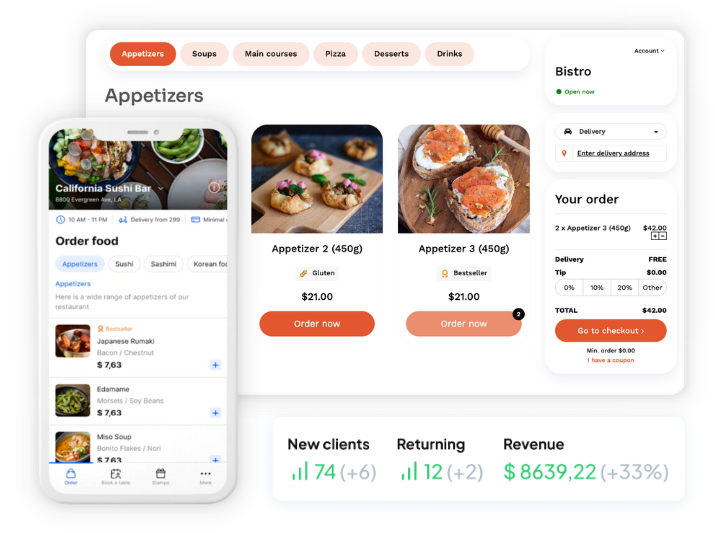
Advantages of Starting a Ghost Kitchen
While ghost kitchens may lack the traditional dine-in experience, they offer numerous benefits to restaurant operators and owners. However, before exploring further, it’s important to understand the necessary health standards, cooking expertise, and delivery partners to ensure success.
However, if all is in place, businesses can reap numerous benefits. Here are a few of the most prominent ways that dark kitchens prove to be very effective for restaurant businesses::
- Increased efficiency: Ghost kitchens can focus solely on food preparation and delivery, improving efficiency and customer satisfaction.
- Flexibility in menu offerings: Ghost kitchens can experiment with different menu offerings, catering to a wider customer base without sacrificing quality or brand identity.
- New concepts or brand testing: Ghost kitchens offer quick testing and implementation of new ideas or brand offerings.
- Greater reach: By delivering food directly to customers, ghost kitchens have a wider reach and can serve a larger audience.
- Meeting the demand for online food delivery: The ghost kitchen market continues to expand rapidly, meeting the growing demand for online food delivery.
Ghost kitchens are forecast to hold a 50 percent share of the drive-thru and takeaway foodservice markets worldwide, respectively, by 2030.
Statista Research Department
- Scalability: Ghost kitchens can easily adjust their operations based on demand, allowing growth and expansion.
- Increased online presence: By utilizing digital platforms and food delivery apps, ghost kitchens can increase their online presence and reach a larger audience.
- Reduced risk: With lower costs compared to traditional restaurants, dark kitchen operators have a reduced risk of hefty maintenance costs.
- Dominance in a specific food category: Ghost kitchens have the opportunity to specialize and dominate in a specific food category.
- Adapting to changing consumer behavior: As consumers increasingly order food for delivery, these are well-equipped to adapt and meet this changing demand.
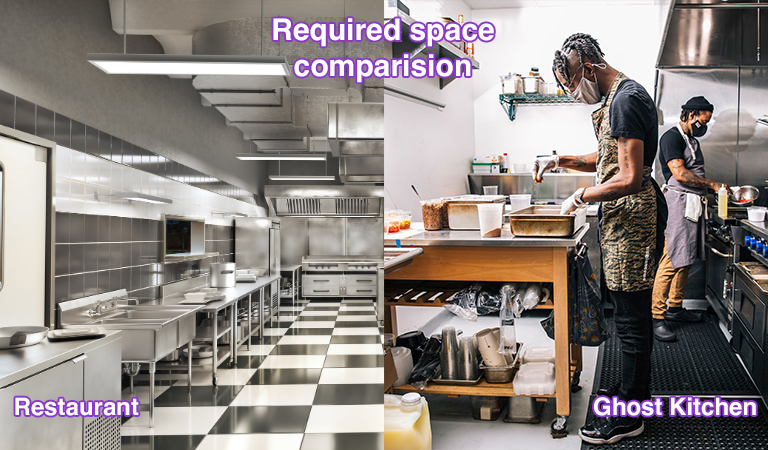
Statistics have proven that takeout and delivery orders make up for a major chunk of American’s regular diets, and ghost kitchens play an important role in keeping that up.
Cost-Saving Benefits
Restaurant owners can increase their delivery services without dealing with the high costs associated with setting up a dining room. Here are the key elements that play into that:
- Lower overhead costs: You can save money on rent, labor, and other overhead costs associated with operating a full-fledged restaurant. You may also consider learning how to start a food business from home to reduce risk even further.
- Lower staffing costs: Another cost-saving benefit of ghost kitchens is that they don’t require a waitstaff, and other labor needs are also minimal at best.
- Save money on marketing: By partnering with a third-party delivery service, restaurants can reach customers in various locations. This allows restaurants to expand their customer base without investing in costly marketing campaigns.
- Management made easy: Ghost kitchens rely heavily on online ordering systems to keep track of orders, get food to customers, market the business, streamline deliveries, and more.
Types of Ghost Kitchens
Here are the three main types of ghost kitchens:
Type 1: Commissary or Shared Kitchens
This is a co-working space where multiple restaurants share a single kitchen space. Each business is responsible for its own equipment and ingredients, but they share the same facilities, such as refrigeration, cooking equipment, and storage. This restaurant business model is ideal for businesses that do not want to invest in their own kitchen space and equipment.
Type 2: Incubator or Pop-up Kitchens
An incubator kitchen provides support and resources to start-up food businesses. It gives the kitchen space, equipment, and resources needed to start and grow a food business. This is ideal for businesses that are just starting and need support to get off the ground.
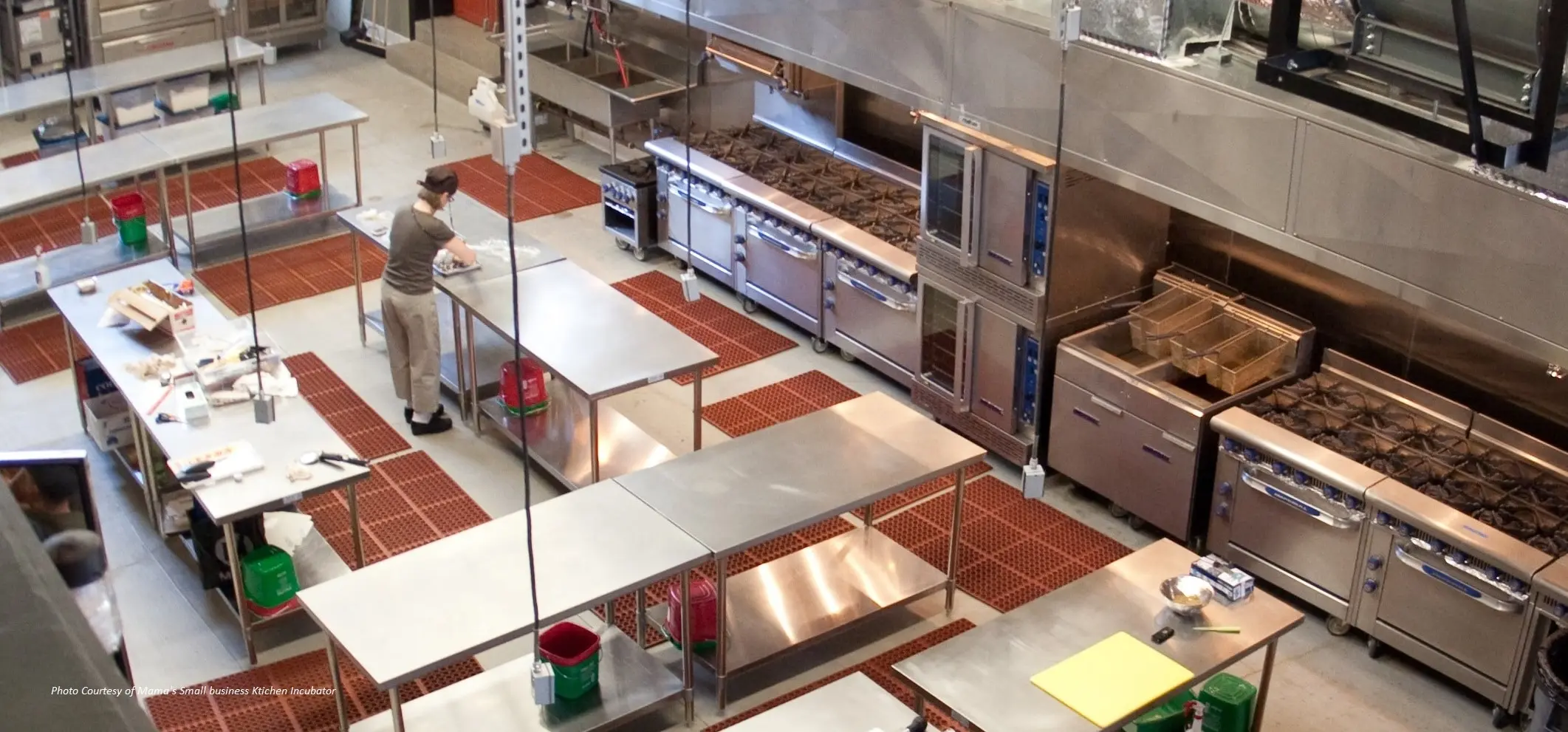
Type 3: Kitchen Pods
Kitchen pods are designed for businesses that want private kitchen space. They are fully equipped with all the necessary kitchen equipment, such as refrigeration, cooking equipment, and storage. Kitchen pods offer businesses the flexibility and independence needed to operate their own food delivery and takeout service. They also provide the convenience of being located in centralized locations, making it easy for businesses to reach their customers.
Each type of ghost kitchen has its own unique features and advantages, making them ideal for different types of food businesses. Whether starting a food business from scratch or expanding an existing one, a ghost kitchen is a great option.

Setting up a Ghost Kitchen
Restaurateurs are exploring the possibilities brought to them by ghost kitchens.
These are great to diversify how you sell your customers and bring them your food wherever they may be.
The good news is that setting up a dark kitchen is relatively simple, and there are a few key steps to follow. Here’s a quick look at the entire process. For further detail, check out our guide to starting a ghost kitchen.
- Step 1: Conduct market research: First, figure out if delivery-only meals are the right opportunity for you. Understand the market and potential competition.
- Step 2: Choose the right concept and menu: Figure out what kind of menu you’ll offer, your target audience, and how you can differentiate your cuisine from other players in the niche.
- Step 3: Develop a business plan: Understand why you want to open a ghost kitchen and create a plan to make it viable. Include the funding, distribution, marketing strategies, etc.
- Step 4: Find the optimal location: Restaurants should look for a place that is close to the restaurant business or in a separate site altogether. This will help ensure that the food is delivered quickly and efficiently.
- Step 5: Meet restaurant regulations and required licenses: Restaurants should also have all the necessary permits and licenses before they begin operating their ghost kitchen.
- Step 6: Build your brand: Come up with a business name, and create a logo and branding that differentiate you from others.
- Step 7: Find suppliers: This includes purchasing equipment, such as ovens, refrigerators, and sinks, and setting up the kitchen space.
- Step 8: Build a restaurant website: Your website shouldn’t just be good for branding but also be able to take orders and feedback from customers.
- Step 9: Set up an online ordering system: Select the right one to help you receive and manage orders.
- Step 10: Staffing and training labor: Figure out how many chefs, sous chefs, line cooks, kitchen managers, cleaners, etc., you’ll need.
- Step 11: Start promoting your business: Dabble with digital ads, social media, and email marketing to get your business off the ground.
Ghost Kitchen vs. Dark Kitchen vs. Virtual Restaurant vs. Cloud Kitchen
Many people use these three words interchangeably. This is not exactly wrong, but these concepts have minor differences. Here’s a quick comparison:
| Feature | Ghost Kitchen | Dark Kitchen | Virtual Restaurant | Cloud Kitchen |
|---|---|---|---|---|
| Definition | A restaurant that operates only for delivery or takeout and has no physical storefront. | A type of ghost kitchen that operates in a commercial kitchen space and does not have a public-facing presence. | A restaurant that only operates online through delivery apps and does not have a physical storefront. | Multiple restaurant brands use centralized commercial kitchen space for food preparation and delivery. |
| Menu Offerings | Limited menu offerings that are optimized for delivery. | Limited menu offerings that are optimized for delivery. | Limited menu offerings that are optimized for delivery. | Multiple menu offerings from different restaurant brands. |
| Location | Can be located in a commercial kitchen or in the back of a physical space. | Typically located in a commercial kitchen space. | Online only, with no physical storefront. | Typically located in a commercial kitchen space. |
| Customer Experience | Limited customer interaction, typically through a food delivery app. | No customer interaction, as there is no public-facing presence. | Limited customer interaction, typically through delivery apps only. | Limited customer interaction, typically through delivery apps only. |
| Overhead Costs | Lower overhead costs than traditional restaurants, as there is no need for a physical storefront. | Lower overhead costs than traditional restaurants, as there is no need for a public-facing presence. | Lower overhead costs than traditional restaurants, as there is no need for a physical storefront. | Can be lower overhead costs than traditional restaurants, depending on the business model. |
In summary, the main differences between these four terms are their focus, whether they have a physical storefront and the scope of their operations. Ghost kitchens and dark kitchens refer to the physical kitchen space, while virtual restaurants and cloud kitchens focus on the online presence and centralization of functions, respectively.
Pros and Cons of Ghost Kitchen
Ghost kitchens are cost-effective and efficient, but they don’t offer the experience and artistry of popular dine-in restaurants, no matter how good the food is. Still, many people don’t have the time for or are interested in traditional eateries and are content ordering online.
If you are planning to open a ghost kitchen for this audience, here are a few pros and cons to consider:
Pros
- Lower overhead: Without needing a physical storefront, dark kitchens can save money on rent, utilities, and operational costs.
- Flexibility: Ghost kitchens can easily switch menus, cuisines, and brands, allowing maximum flexibility in response to changing customer demands.
- Focus on branding and online presence: Virtual restaurants can invest in building a solid online brand and customer experience, reaching a wider audience.
Cons
- Limited customer interaction: Without a physical storefront, ghost kitchens miss out on the opportunity to build a personal relationship with customers and gather feedback.
- Dependence on delivery platforms: Dark kitchens rely on third-party delivery apps, which can increase costs and limit control over the customer experience.
- Lack of visibility: Ghost kitchens may need a physical storefront to gain visibility and build a recognizable brand.
Pros and Cons of a Virtual Restaurant
These restaurants are started in an existing location and offer new delivery-only menus. Developing a virtual brand is an excellent way to serve the growing delivery needs of local customers.
Here are a few pros and cons of starting a virtual restaurant for existing restaurants and chefs:
Pros
- Easier to start: Virtual restaurants are an extension of existing restaurants. They only have to start taking orders online.
- Flexibility: Virtual restaurants can easily switch cuisines, menus, and brands, allowing maximum flexibility in response to changing customer demands.
- Focus on delivery: With a focus solely on delivery and takeout, ghost kitchens can streamline their operations and optimize their menu for this type of service.
Cons
- Dependence on delivery platforms: Virtual restaurants rely on third-party delivery platforms, which can increase costs and limit control over the customer experience.
- Limited customer interaction: If customers don’t know which traditional eatery is associated with a virtual restaurant, they may have difficulty trusting the brand.
- Difficulty building brand: Virtual restaurants may need help to gain visibility and create a recognizable brand separate from the parent company.
Ghost Kitchen or Virtual Restaurant: Which one is Right for Your Business
A ghost kitchen may be the right option if you still need to get a kitchen where you can cook. Rent a setup and start your ghost kitchen immediately without worrying about the additional costs of starting a restaurant.
Existing chain restaurants and eateries are also increasingly interested in setting up ghost kitchens to experiment with menus and start delivery-only service in different locations without the overheads of creating a full-fledged restaurant.
But if you already have a kitchen, a virtual restaurant is a great way to add a new unique revenue stream to your primary business. Think about it. You can use the same staff, ingredients, resources, and utensils to offer a new menu, test new ideas and delight new customers.
Either way, you can partner with third-party online delivery solutions to handle everything from branding and packaging to marketing and delivery.

Final Thoughts About The Ghost Kitchen Concept
- Ghost kitchens, also known as delivery-only restaurants, are a new concept in the food industry where restaurants operate solely for the purpose of fulfilling online orders for delivery or takeout.
- Ghost Kitchen, Dark Kitchen and Virtual restaurant are used interchangeably. The main difference between these kitchens and a traditional restaurant is that they don’t offer dine-in options. Instead, customers can either order their meals online for pickup or delivery.
- Ghost kitchens allow for more efficient use of kitchen space and lower overhead costs by not having to invest in a physical storefront or dining area.
- These types of restaurants have become increasingly popular in recent years due to the rise of food delivery apps and the shift towards online ordering and takeout.
- Starting a dark kitchen requires careful planning and consideration of factors such as concept development, kitchen location, business permits and licenses.
- Ghost Kitchens are all about creating an online presence by using a variety of software solutions, like an online ordering system, restaurant website builder and restaurant marketing software for building a strong online brand.
- Ghost kitchens could be a viable option for entrepreneurs looking to enter the food industry with a lower initial investment and the ability to reach a wider audience through digital platforms.
Frequently Asked Questions (FAQ)
What is an example of a ghost kitchen?
Ghost kitchens are spreading worldwide, from small, local startups to large multinational chains. Some notable examples of ghost kitchen brands include:
- CloudKitchens
- Frontier Kitchen
- Ghostkitchenbrands
- NextBite
- Kitchen United
- DoorDash Ghost Kitchen
Each of these companies offers a unique twist on the ghost kitchen concept, showcasing the versatility and potential of this innovative business model.
Why is it called a ghost kitchen?
The term “ghost kitchen” is often used for delivery-only restaurants where the food is prepared in hidden kitchens, delivered to the buyer by delivery drivers, or offered for pickup. Without a physical storefront or dining area, ghost kitchens exist only in the virtual world, making them like spirits in the culinary world. This idea of invisibility is what gives ghost kitchens their spooky moniker.
What problems do ghost kitchens solve?
A ghost restaurant can serve its hungry diners without needing a physical storefront. This reduces overhead costs, streamlines kitchen operations, and increases efficiency. Additionally, ghost kitchens allow businesses to reach a wider audience through online delivery platforms, expanding their customer base and driving growth.
Are ghost kitchens sustainable?
The sustainability of ghost kitchens is a hotly debated topic in the food industry. On the one hand, they offer a cost-effective solution to increase profitability and reach. On the other hand, ghost kitchens must navigate a highly competitive market and face brand recognition and customer loyalty challenges. Ultimately, the sustainability of ghost kitchens will depend on their ability to adapt and evolve to meet changing customer demands and market conditions.
What is the difference between a ghost kitchen and a cloud kitchen?
While the terms “ghost kitchen” and “cloud kitchen” are sometimes used interchangeably, there is a subtle difference between the two. The former is a delivery-only restaurant that operates without a physical storefront. On the other hand, a cloud kitchen takes this concept a step further by centralizing kitchen operations in a single, large-scale facility. This allows for more efficient use of resources, increased scalability, and a stronger emphasis on technology and data-driven decision-making.
How do Ghost Kitchens Work?
Ghost kitchens are online-only restaurants that prepare food for delivery or takeout. They operate from shared kitchen spaces, cutting costs by skipping dine-in areas. Orders are made online and delivered through third-party services, focusing on efficiency and meeting digital food delivery demand.
Are Ghost Kitchens Profitable?
Ghost kitchens have the potential to be profitable for several reasons. One key factor is their cost-efficient approach. Ghost kitchens can significantly reduce their operational expenses by eliminating the need for a physical dining area, front-of-house staff, and related overhead costs.
Moreover, the rise in online food delivery and its convenience have contributed to ghost kitchens’ profitability. As more consumers opt for easy ordering food through apps and websites, ghost kitchens are strategically positioned to cater to this growing demand.
However, like any business, success depends on factors such as effective branding, marketing, menu offerings, and operational efficiency.
